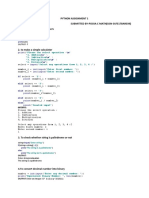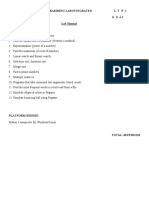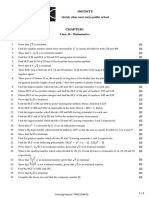0% found this document useful (0 votes)
17 views46 pagesBinary Search (Recursive)
The document provides a collection of Python programming tasks and their implementations, covering topics such as checking perfect numbers, computing GCD and LCM, counting words, and generating prime numbers. It also includes operations on lists and dictionaries, such as removing duplicates, merging sorted lists, and performing set operations. Additionally, the document features recursive functions for calculating factorials, Fibonacci numbers, and solving the Tower of Hanoi puzzle.
Uploaded by
rahulr9460180848Copyright
© © All Rights Reserved
We take content rights seriously. If you suspect this is your content, claim it here.
Available Formats
Download as PDF, TXT or read online on Scribd
0% found this document useful (0 votes)
17 views46 pagesBinary Search (Recursive)
The document provides a collection of Python programming tasks and their implementations, covering topics such as checking perfect numbers, computing GCD and LCM, counting words, and generating prime numbers. It also includes operations on lists and dictionaries, such as removing duplicates, merging sorted lists, and performing set operations. Additionally, the document features recursive functions for calculating factorials, Fibonacci numbers, and solving the Tower of Hanoi puzzle.
Uploaded by
rahulr9460180848Copyright
© © All Rights Reserved
We take content rights seriously. If you suspect this is your content, claim it here.
Available Formats
Download as PDF, TXT or read online on Scribd
/ 46
























































































